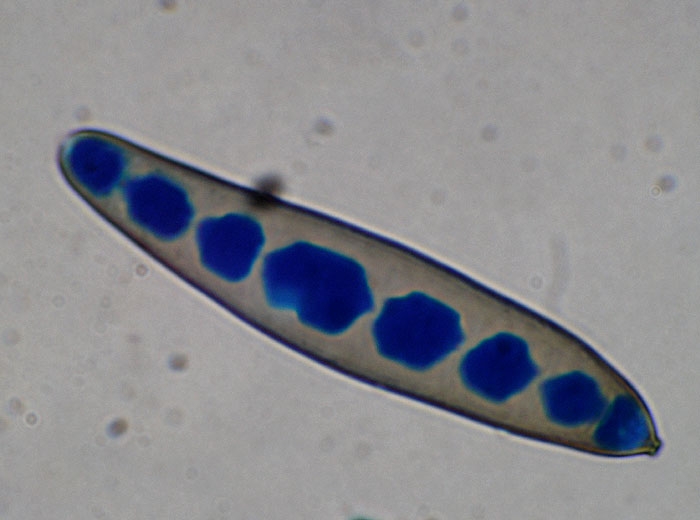
Corynespora cassiicola (Berk. & MA Curtis) CT Wei (1950)
Corynespora blight
- classification : Fungi, Ascomycota, Dothideomycetes, Pleosporomycetidae, Pleosporales, Corynesporascaceae
- téléomorphe : Corynesporasca
- synonymes : Cercospora melonis Cooke, (1896) ; Corynespora melonis (Cooke) Sacc., (1913)
- English name: target leaf spot, c
This fungus, sometimes confused with a Helminthosporium , is quite widespread in the world. It is reported on Cucurbitaceae in several humid tropical or subtropical countries . It is observed in the open field as well as under shelter, in particular on cucumbers; it seems less frequent and less damaging on melon . On cucumber, it would have been reported under glass in Germany, Holland, and England, never to our knowledge in France.
It is not rife in France.
Extremely polyphagous, it is reported on more than 145 botanical genera belonging to at least 53 families. Some strains still have a certain parasitic specificity.
Main symptoms
Symptoms first appear on old leaves .
At first chlorotic spots, more or less delimited by the veins, appear on the blade. They spread out and become circular, and quickly take on a light brown tint in the center, and darker in the periphery. Rather old lesions are gray and the core tissues can break down and fall out.
Biology epidemiology
- Conservation, sources d'inoculum
- cassiicola is extremely polyphagous, which allows it to maintain and multiply on a wide variety of cultivated plants (some Cucurbitaceae, tomato, pepper, eggplant, tobacco, certain beans, hydrangea, soya, rubber, sesame, cotton? ?) or weeds ( Commelina benghalensis, Verronia cinerea, Aspilia africana, Lepistemon sp. ) which ensure the multiplication of this fungus and act as reservoir plants.
It keeps easily on plant debris for more than 2 years.
- Penetration, invasion
Contamination takes place during humid periods, via the stomata or directly through the cuticle. Once in the tissues, the fungus quickly colonizes them.
- Sporulation, dissemination
It sporulates on altered tissues forming characteristic elongated conidia, subhyaline to slightly brown, isolated or in short chains. These have 4 to 20 pseudo-partitions (Figures 1 and 2). They are dispersed throughout the morning by wind, rain and splash. They ensure secondary contamination.
- Favorable conditions
This fungus is favored by heavy rains, long periods of humidity and temperatures in the range of 24 to 31 ° C. Its thermal optimum would be around 28 ° C. It is particularly suited to the conditions of the tropical and subtropical rainy season.
Protection methods
Of crop rotation long enough will be carried out; they will not involve sensitive cultures.
New plantings should be avoided near affected or sensitive crops.
Old diseased leaves will be removed at harvest time; they will in no case be left on the ground.
Fungicides can be applied preventively during periods of risk, or as soon as you observe the very first symptoms. The following active ingredients are reported in the literature for their more or less good performance with regard to C. cassiicola : chlorothalonil, mancozeb, maneb, copper, dichlofluanide, iprodione . It should be noted that this disease does not seem to be rampant in France at present and that no fungicide is currently approved on Cucurbitaceae.
A number of varieties cucumber are resistant to corynesporiosis because they are provided with a gene Cca which ensures total and stable resistance.
* Chemical control : As the number of pesticides available for a given use is constantly changing, we advise you to always confirm your choice by consulting the e-phy site of the Ministry of Agriculture and Fisheries which is an online catalog of plant protection products and their uses, fertilizers and growing media approved in France. This also applies to all biological products based on microorganisms or natural substances.





